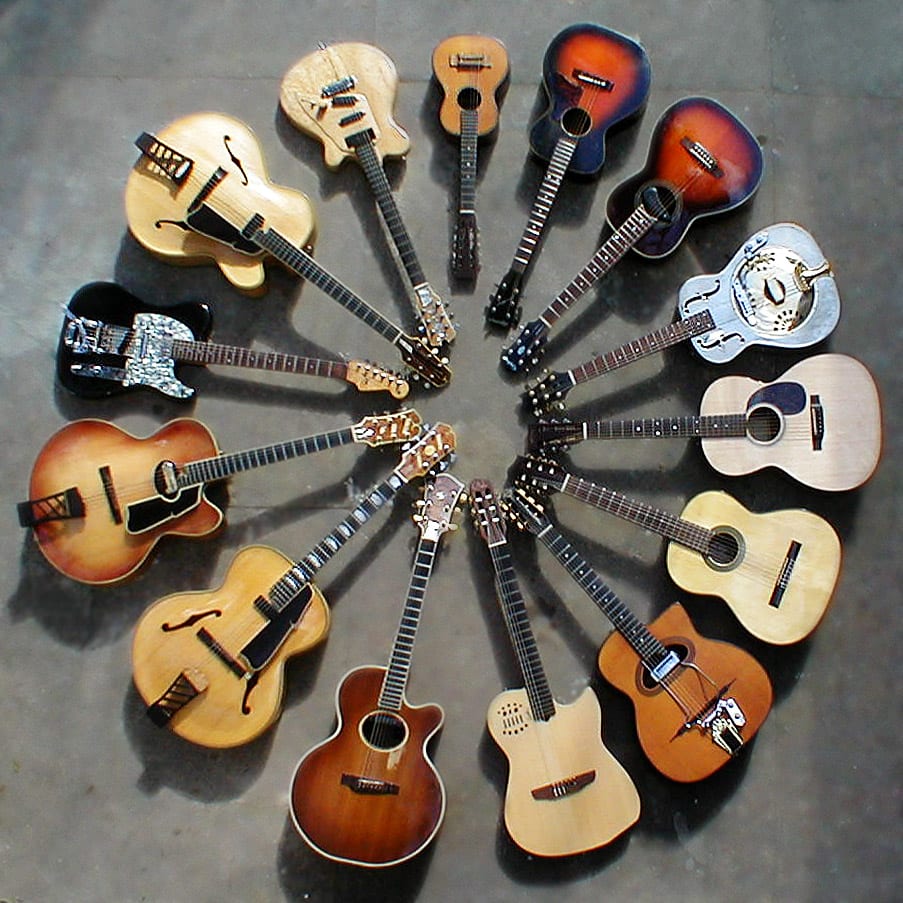 These days, country music is much more than just grabbing a guitar and singing about losing your job, wife and dog. Just ask the wildly popular Lady Antebellum – who picked up 5 awards at the 2011 Grammy Awards – or the growing list of stars who started out in one genre and have since tried their hand at country – Kid Rock, Sheryl Crow and Bon Jovi, just to name a few.
These days, country music is much more than just grabbing a guitar and singing about losing your job, wife and dog. Just ask the wildly popular Lady Antebellum – who picked up 5 awards at the 2011 Grammy Awards – or the growing list of stars who started out in one genre and have since tried their hand at country – Kid Rock, Sheryl Crow and Bon Jovi, just to name a few.
If you aim to be a country star someday, you’ll need a good guitar by your side. Clueless about picking out a guitar? Don’t worry – these tips from Creative Guitar Studio are a great starting point:
1. Decide what you want:
Decide what you want first. Talk to musicians in your local music scene. Chat with your private guitar instructor, if you’ve already signed up for guitar lessons, and purchase a few guitar player magazines and look through them. Get catalogs and company brochures, which are often available from your local music store. Read everything else you can find related to guitars that you are interested in. Search for all makes and models and read what people are saying in online discussion forums and threads. Learn and read everything that you can so you can make a decision you’ll truly be happy about in the long run.
2. Acoustic or Electric?:
An acoustic guitar is probably the way to go for the beginner student on a budget. There are no amplifiers or patch cords to buy – just take it out and play! Also, if you aren’t sure about your long term interest for the months and years of practice ahead, an acoustic can be far more cost saving and sometimes less of a hassle to sell second-hand in the event that you give up on your interest.
Electric guitars are more expensive since they require amplification; a good guitar practice amp can cost around two hundred dollars or more. If you can afford it, however, they do offer a little more room for sound experimentation since their signal can be run through relatively inexpensive sound processors. Another plus to electric guitars is the fact that they do have lower action and are somewhat easier to play than the acoustics. The nylon string acoustics make for excellent beginner models – they are easy to play and quite inexpensive.
3. Go for a “test drive”:
When you go looking at guitars, don’t just look! Grab each one, hold it and examine the shape of the neck. The width and shape should accommodate the size of your hand. It should feel comfortable. If you have smaller hands perhaps a smaller neck would work better for you (see also: Practice Tips: Exercises and Guitars for Small Hands). Keep in mind that you will be holding this instrument for hours and hours practicing each week. It should feel comfortable.
Check for the following things:
1.) Action – How easy the strings are to depress?
2). Intonation – Is the guitar in tune with itself. (Play chords up the neck to check)?
3). Fret edges – Are they clean and smooth, or sharp and poorly machined from the factory?
4. Pay attention to how it sounds:
The simplest way to define music is the interaction of sound and silence. When checking out an instrument you want to purchase, who cares about the silence part! Just play it! Strum it, pick it, play those strings. Play it in different parts of the store. If you do not play well, take a friend who does and get them to play the guitars that interest you.
Keep in mind accessories you may want to purchase, as well: guitar strap (especially handy for beginners), spare strings, electronic tuner, guitar stand and extra picks. Oh and don’t forget the cowboy boots, if you’re so inclined.
Once you have the perfect guitar, don’t forget to find the perfect guitar instructor to help you get off on the right foot. Click here to search for guitar lessons near you!
You might also like…
– Learn to Play 20 Songs Using 5 Easy Guitar Chords
– 5 Common Mistakes of Beginner Guitarists
– Watch Now: How to Play “Pumped Up Kicks”
Suzy S.
